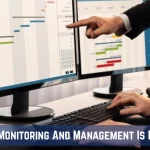In the modern professional world, remote teams are more prevalent than ever. As the number of remote and hybrid workforces has increased, so has the use of remote team management software.
Now, as much as remote work cultures benefit the employees, it has nonetheless created a few challenges for employers in managing the team.
According to a survey by the Society for Human Resource Management (SHRM), 70% of employers said it was challenging to switch to remote work. And while employers have gotten plenty of time to figure out and work on a proper strategy to eliminate these difficulties, many of the problems persist.
In light of this, we’ve outlined some of the challenges that remote workers encounter most frequently, along with tips and best practices for overcoming them. Also, stay tuned to the end to learn about the finest remote team management software, in our opinion, and how it may help you manage your remote and hybrid teams.
Challenges Of Remote Team Management (with solutions)
Regular (on-site) work and remote work differ in critical ways. While working from home has many alluring benefits, there are also some drawbacks.
The following is a list of the most common challenges experienced by remote workers and how to overcome remote work challenges.
Lack Of Proper Communication
Communication is essential while working with remote teams. Office employees can stay updated and debate ideas as they come to work, whether before meetings or over the water cooler. However, in remote work environments, that spontaneous face-to-face contact disappears. Traditional email communications appear to be a formal strategy that does not allow for quick small talks; hence, cultivating open communication when teams operate remotely is quite tricky.
Solution:
Establishing a dedicated communication channel can help remote teams overcome a lack of interaction. Remote team management software or an internal team communication tool like Slack can help facilitate effective communication through various channels. Remote workers won’t feel cut off from one another as long as there is a way to promote two-way communication.
Company Culture
A company’s culture must be established through careful hiring, the growth of strong interpersonal relationships, and the spread of that culture throughout the whole organization. However, managing remote teams can be more complex than usual. Conversation with a group that shares the same office is easier for members of the management. The same cannot be said for the remote teams.
Solution:
Planning is essential to develop a productive workplace culture with a remote workforce that upholds your company’s values. To foster an open communication environment, remote team members must have virtual “open door” access to the CEO. This can be achieved with the help of remote team management software. The owner’s or manager’s interactions with the staff set the tone for the entire process. If you want to create a fun work environment, try throwing entertaining get-togethers, giving coworkers gift cards, or organizing a virtual movie night.
Lack Of Trust
Transparency can help all parties establish trust, especially when working remotely. It can be challenging for remote team members and managers to build trust. When you work from home, it might be easy to let your mind wander down dangerous paths and get angry with management if you believe there is a lack of transparency.
Solution:
Transparency can help all parties establish trust, especially when working remotely. Treat remote and in-office employees equally to eradicate unconscious bias. Every remote team’s virtual office member needs to be aware of all deadlines, expected working hours, the company’s objectives, pay structures, and even the sick leave policy. Therefore, managers of remote teams should make a concerted effort to ensure this. To assist in resolving the issue of project allocation and submission, you can also use a remote team project management software.
Lack Of In-person Interactions
Working with others is one of the best ways to get to know them intimately. However, as the team members are spread across multiple regions and time zones, it is significantly more challenging to do so while working with remote teams. Because of this, one’s teammates lack a sense of personal connection.
Solution:
One-on-one meetings with every remote team member may seem like a hassle, but it makes workers feel valued. Try organizing an annual event for your small staff so they can meet in person.n This would allow them to get to know their distant workers. You can think about hosting an annual gathering for a full-time remote team in a fun location.
Monitoring Productivity And Work Output
Even if most remote employees assert that working from home boosts productivity, some individuals are not suited for it. These workers can have problems carrying out their responsibilities without direct (on-site) supervision. Furthermore, when someone works remotely, it may not be easy to assess if they are completing their share of the work without gauging their productivity level.
Solution:
Consistency and organization are essential for a productive workplace. To build that structure, set deadlines, specify roles and duties precisely, and keep everyone informed about who is in charge of what. The productivity of remote workers should also be measured using the same KPI indicators as that of office workers. This ensures that expectations are communicated to your staff, regardless of where or how they work. Also, you can utilize remote team performance management software to keep the productivity and output of your remote team in check.
Social Isolation
One of the most prevalent problems cited by remote workers is loneliness. A person’s physical and emotional health and sense of belonging to their organization can be affected by isolation from others. Long-term social isolation can occasionally lead to anxiety, sadness, poor performance at work, or a stronger desire to leave the company.
Solution:
Establish as many social connections as possible with remote workers to avoid social isolation. Plan distant interactions, launch a fun chat channel, or go “get coffee” (although virtually). Whatever it takes, keep everything feeling normal. While you are together, pay attention and encourage and comfort each other.
Difficulties In Scheduling
Due to time zone differences, scheduling a phone conference or video meeting for international teams is one of the trickiest aspects of remote work. Independent contractors’ unpredictable work schedules make this situation worse. It might be simpler to select a time that works for everyone if you know where your participants live and their typical schedules.
Solution:
First, organizing a call, a video conference, or a meeting with remote workers can be more straightforward with internet tools and remote team management software. Other than that, it is ideal for letting remote employees know about meetings and other engagements ahead of time so they may prepare for them.
Leading a virtual team has many challenges. Fortunately, they are easily remedied by putting team-building activities into place, enhancing communication, and implementing new procedures. Future trends point to a rise in remote teams and remote team management software.
So, what is the best remote team management software?
As previously stated, we’re going to share with you what, in our opinion, is the most fantastic software for remote team management.
Remote Team Management With EmpMonitor
EmpMonitor is one of the best remote team management software which ensures total A-Z confidentiality of your company’s sensitive data. It has built-in tools that enable organizations to evaluate top-performing staff and fairly compensate them.
It assists a company in monitoring how workers use their time while on the job. It keeps track of every activity the employees do, including the websites and programs they visit. It records keystrokes and displays them as instructive graphs and charts for simple analysis. From the user’s perspective, it is simple to set up, user-friendly, and a one-stop shop for all solutions to tracking, monitoring, and evaluating employee performance.
Following are the remote team management features of EmpMonitor-
- Enhanced Productivity
- Graphical reports
- Save time and money
- Data Security
- Stealth Operation
- 24*7 Support
EmpMonitor’s Main Features-
Time Management:
This function monitors an employee’s activity and identifies and gets rid of time waste.
User Management:
Manage multiple users efficiently via centralized network monitoring.
Real-Time Insights:
EmpMonitor provides live, detailed, and real-time insights.
Attendance Management:
The user-friendly interface of Empmonitor shows the department’s actual work hours and attendance. Additionally, ready-made reports for up to 30 days can be extracted using auto screenshots.
The project lists provided by EmpMonitor remote team management software include project titles, modules, tasks, start and end dates, and the overall time needed to execute a project. It also offers updates on the development and present state of a project. It also provides regular productivity hours with graphs to help you comprehend your staff’s work schedules.
So what’s stopping you?
Get on the EmpMonitor bandwagon and take your remote team management to the next level.
Check Out Our Other Recent Blogs
DECODING THE 4 STAGES OF TEAM DEVELOPMENT
EMPLOYEE ONBOARDING SOFTWARE: THE SIGNIFICANCE OF GETTING STARTED EFFICIENTLY
HOW TO PICK THE RIGHT ATTENDANCE MANAGEMENT SOFTWARE FOR YOUR ORGANIZATION?
Conclusion
Despite significant changes, many of the same management principles that apply to managing traditional teams also apply to remote and hybrid units. The main distinction in mixed groups is the shift in communication to the web. Strong communication has always been a must for efficient management. Remember to constantly check in with team members to learn about their problems, optimize processes and activities as needed, and lead by example to inspire your group.
If you still face difficulties, you can use an excellent remote team management software like EmpMonitor to help you out.













